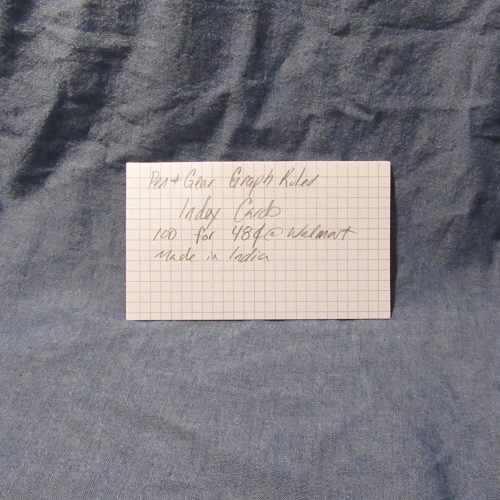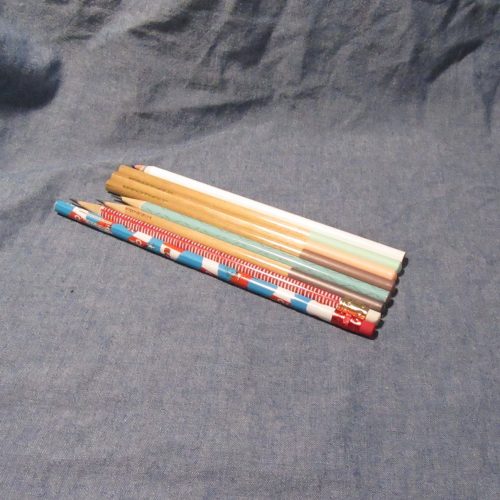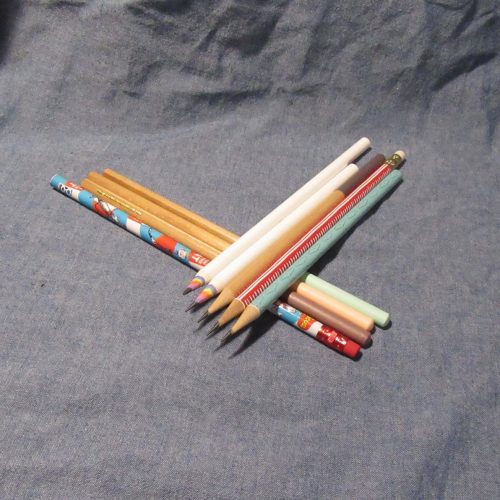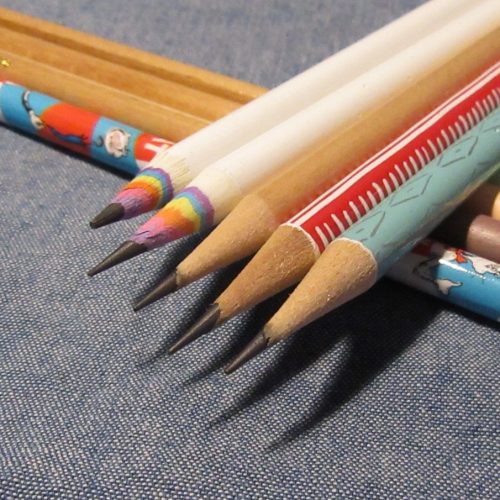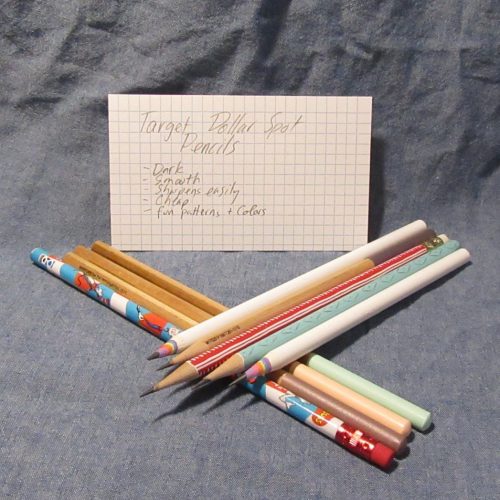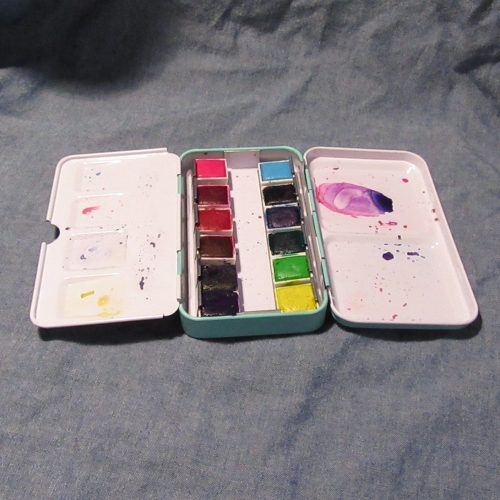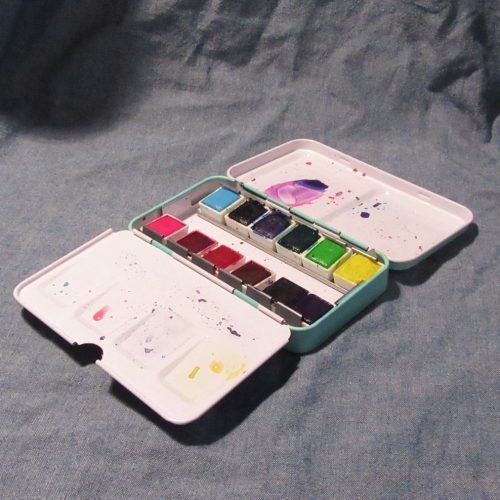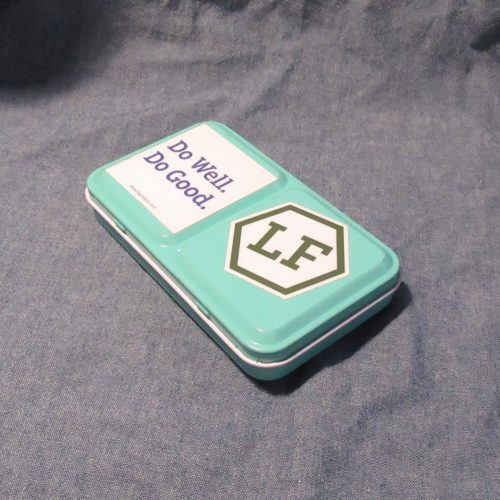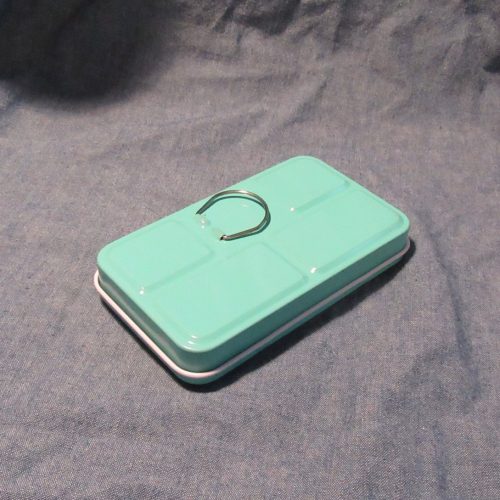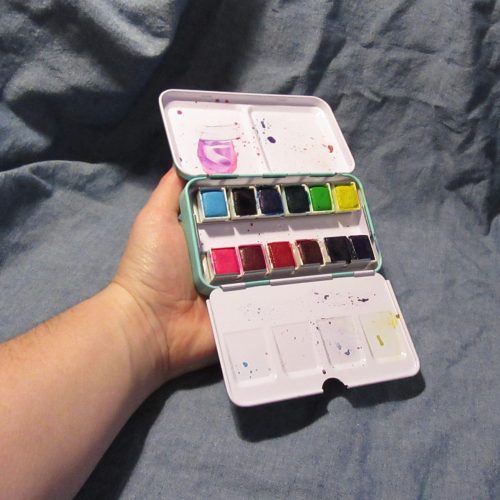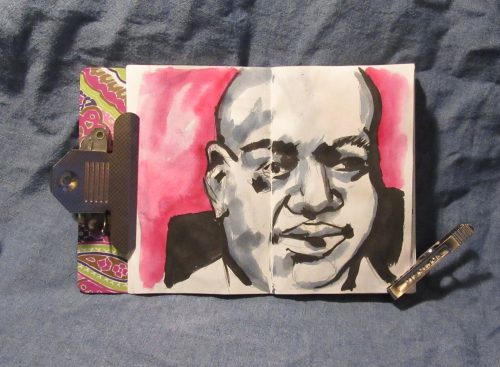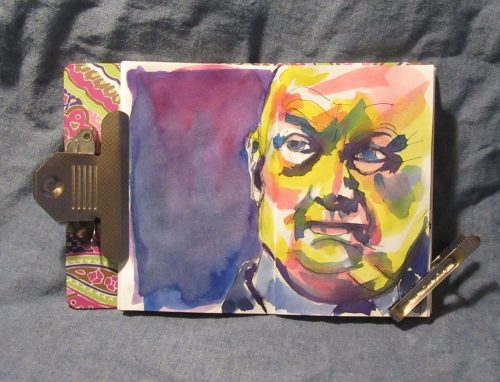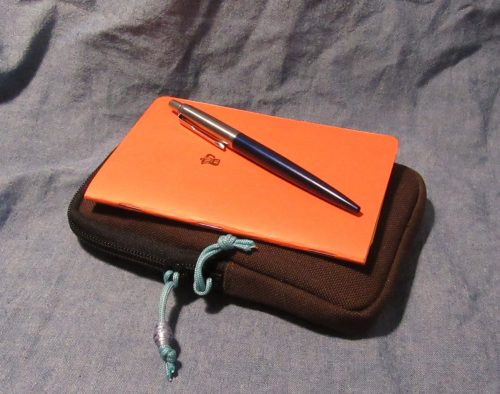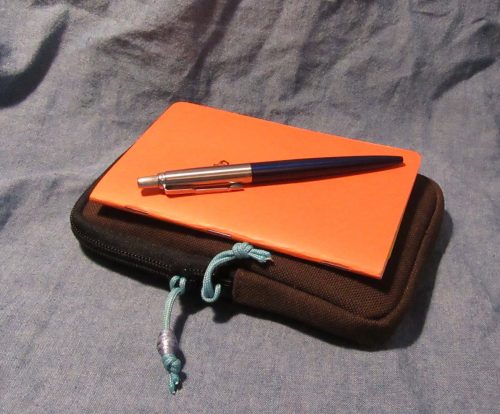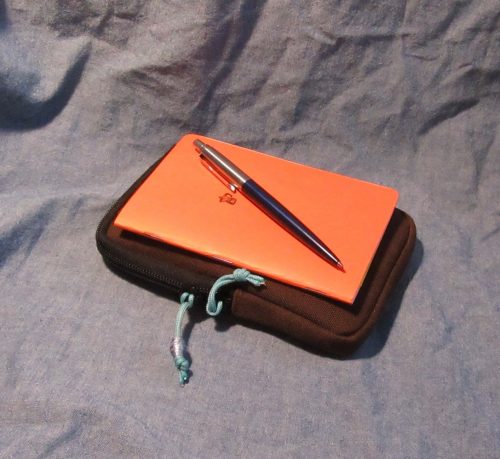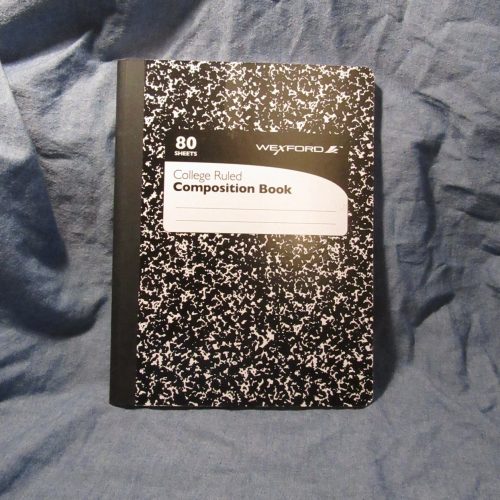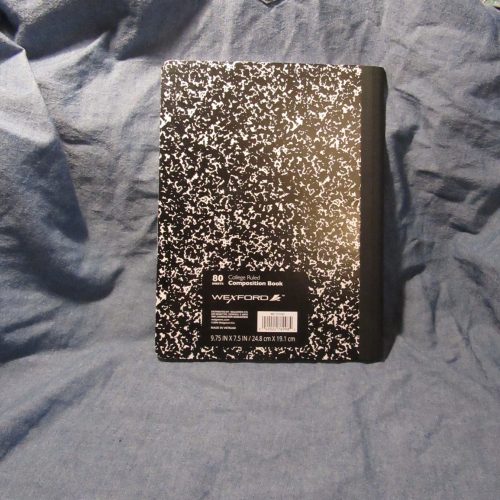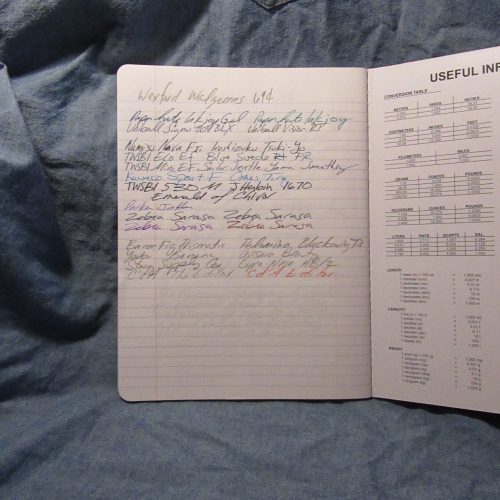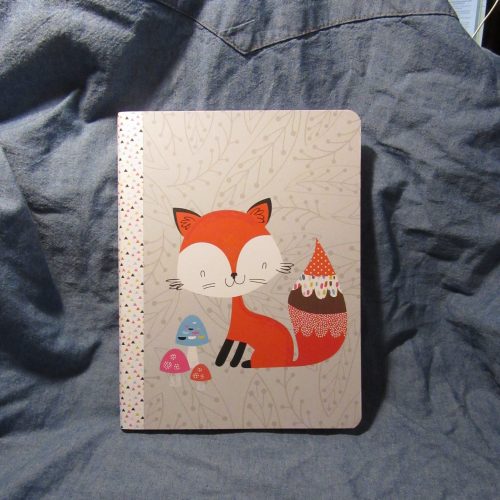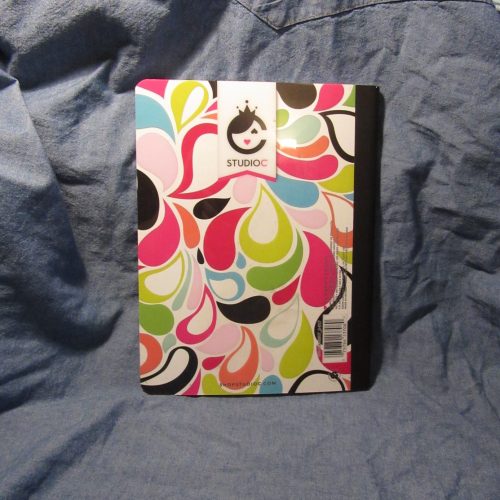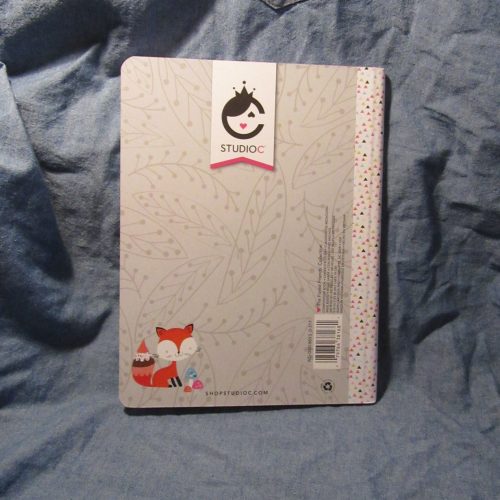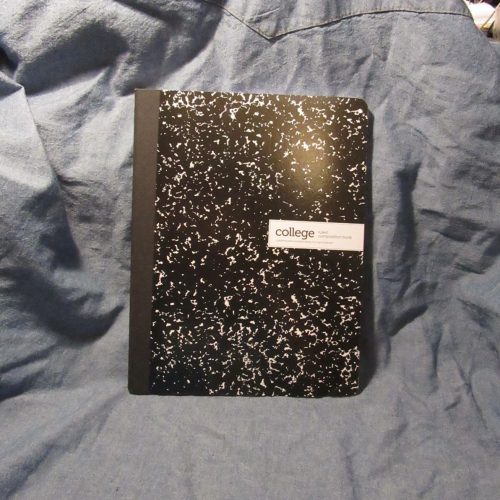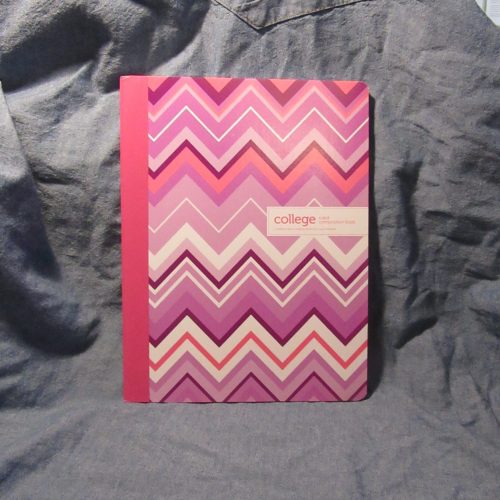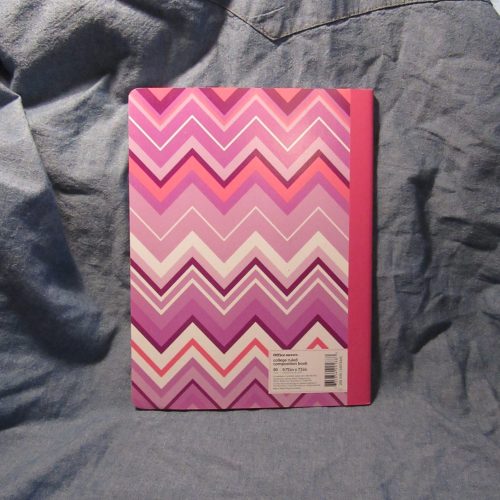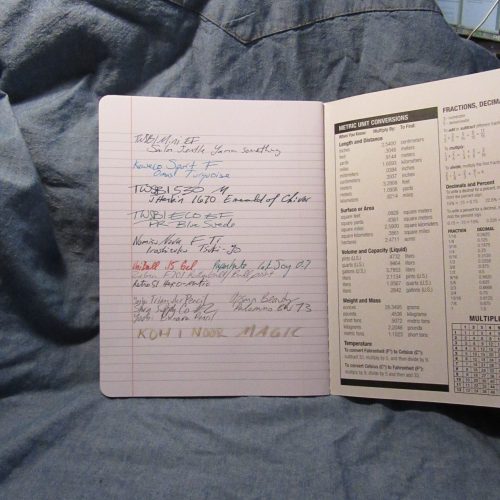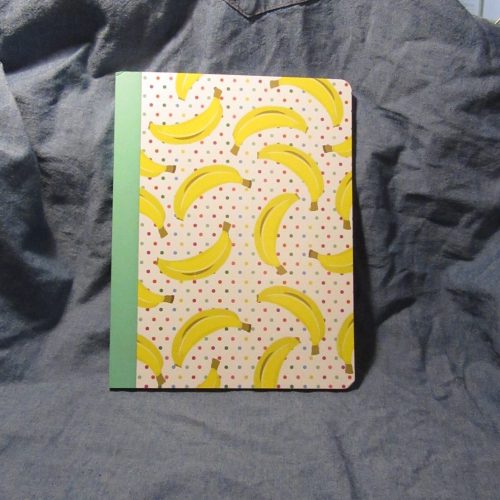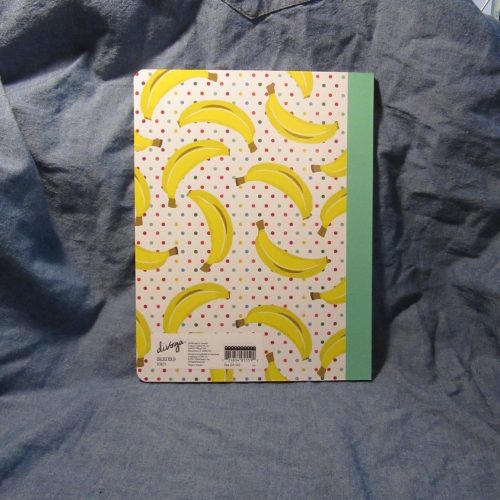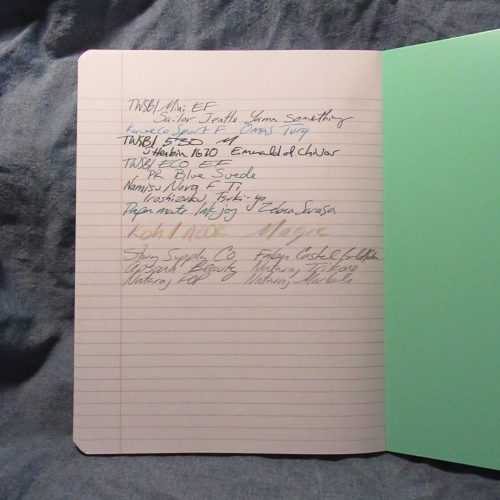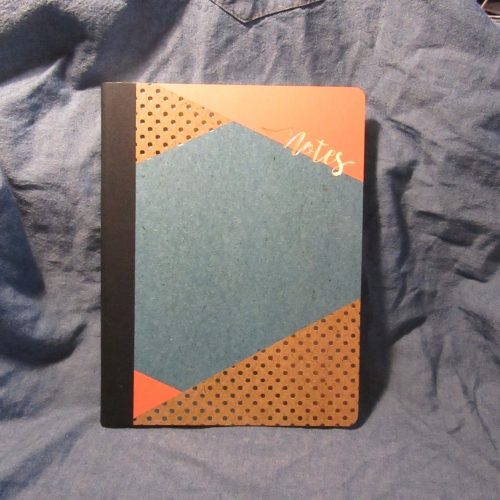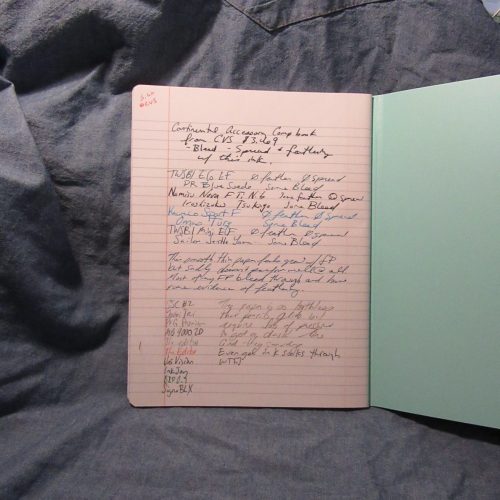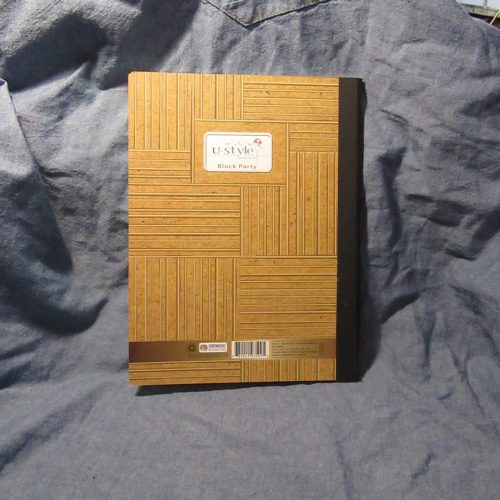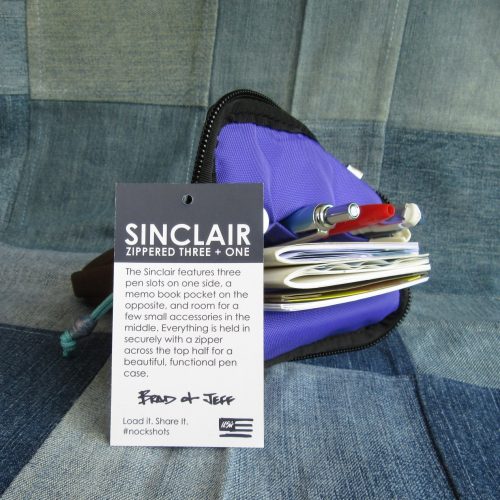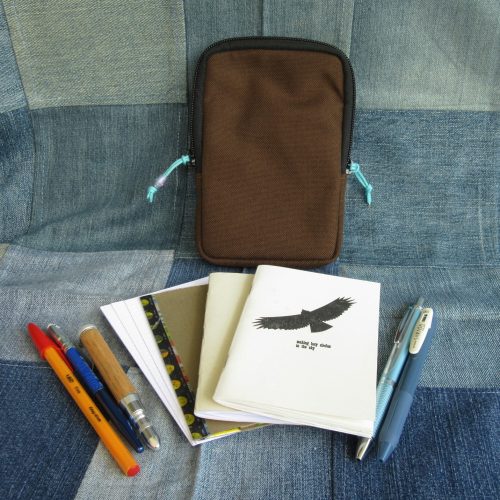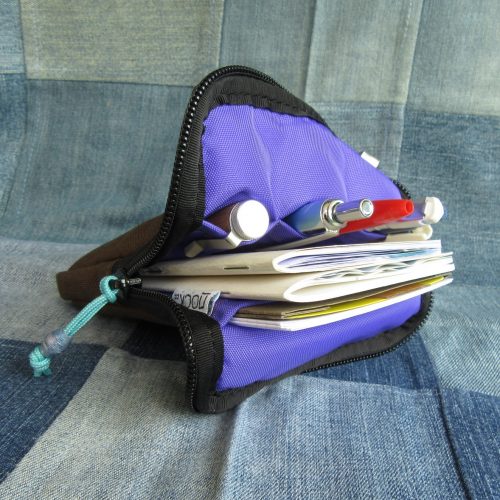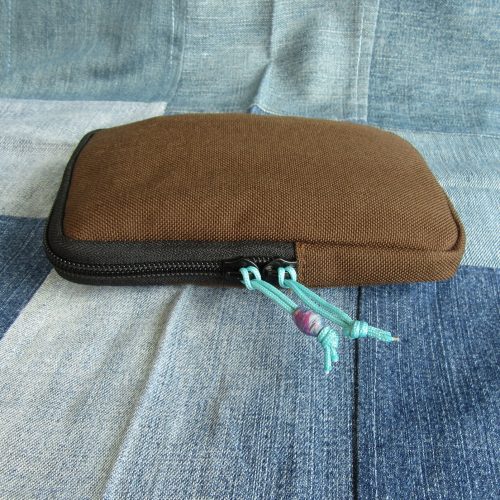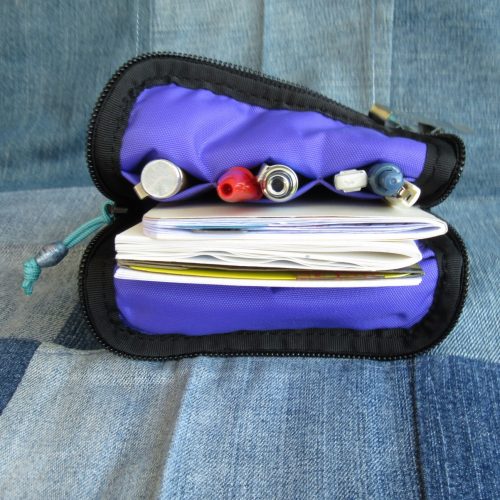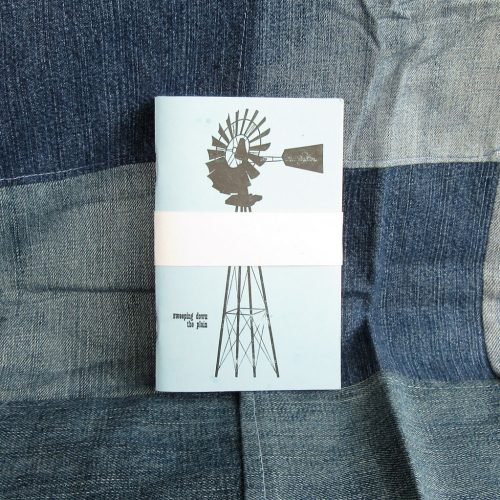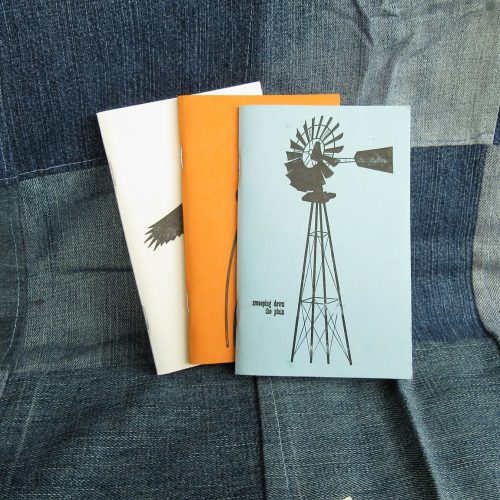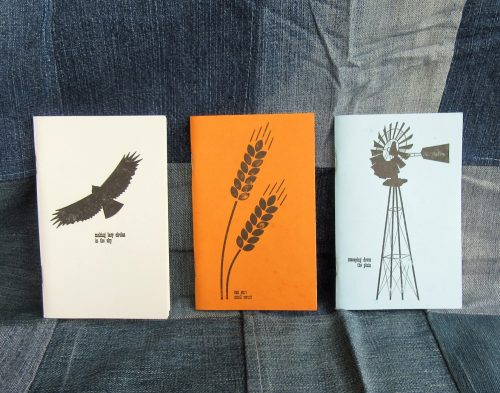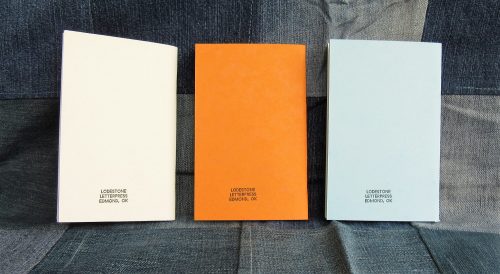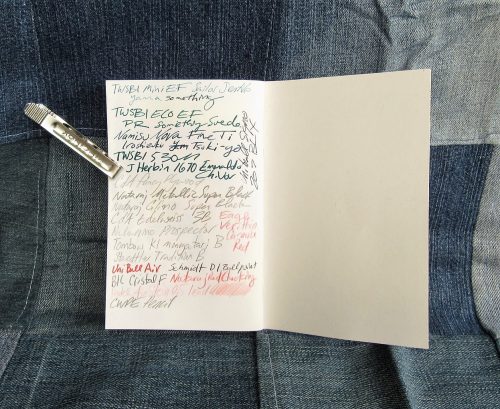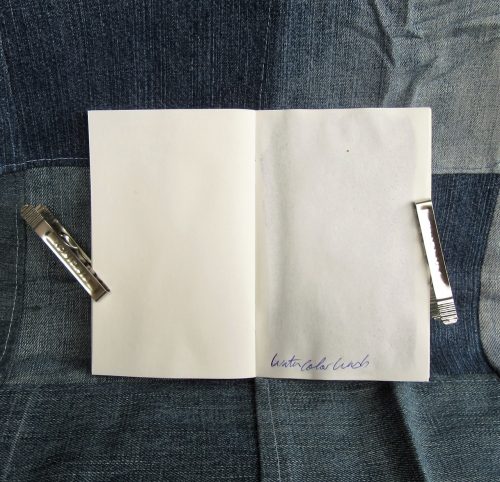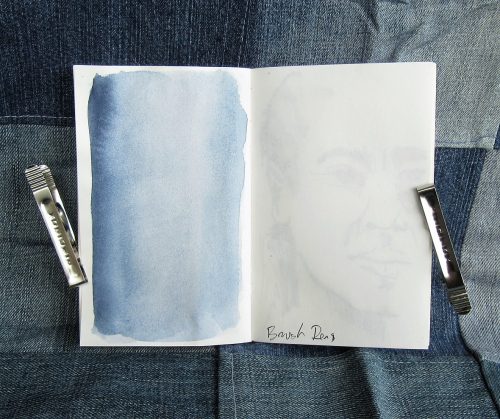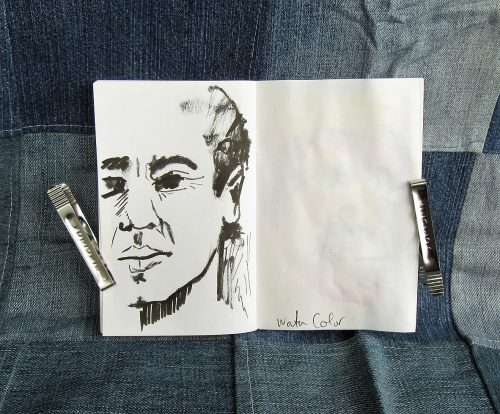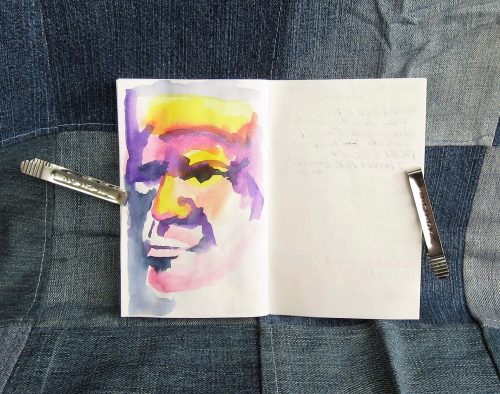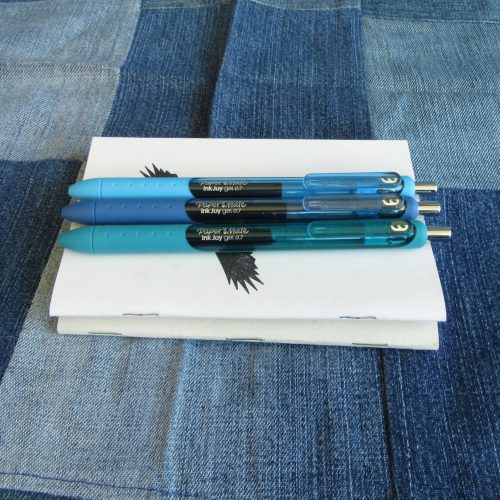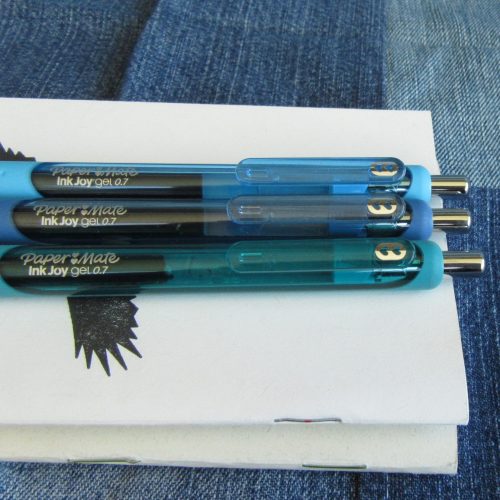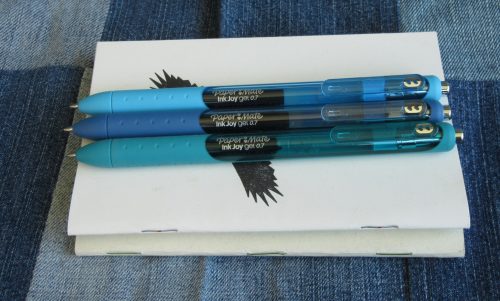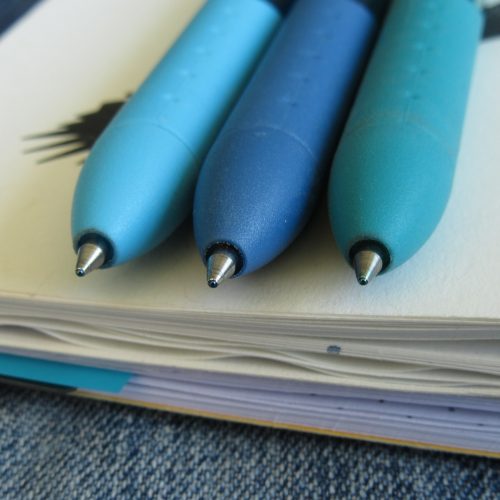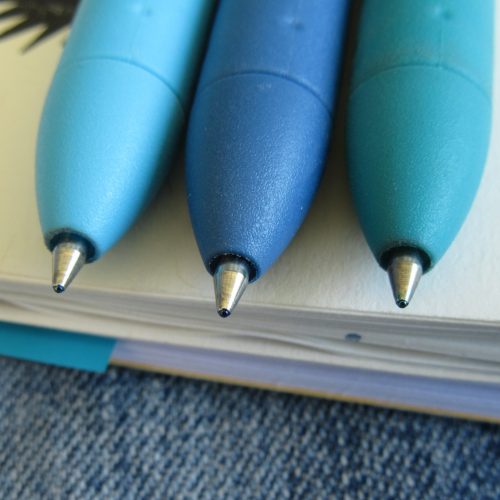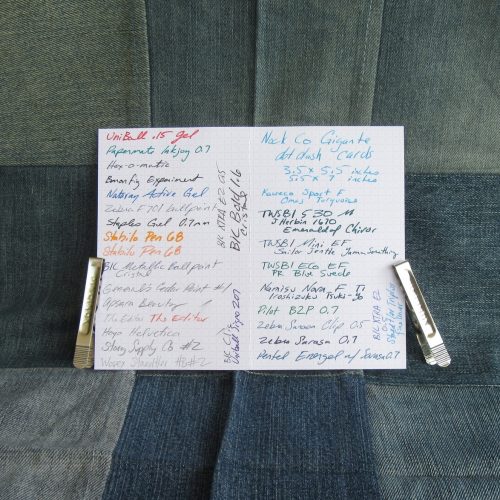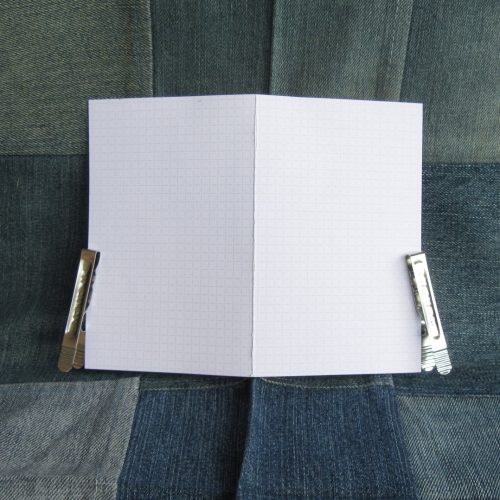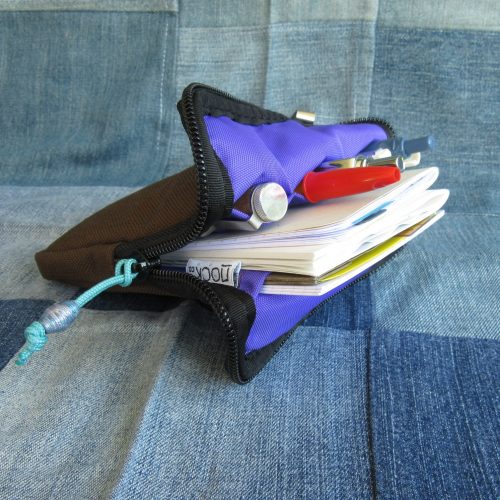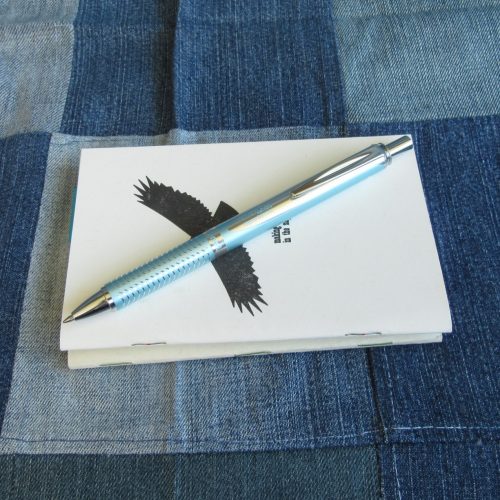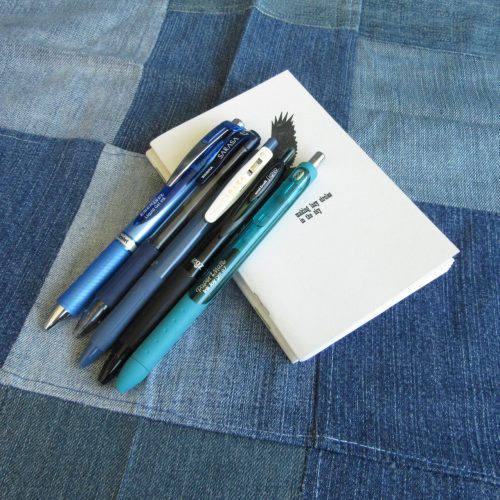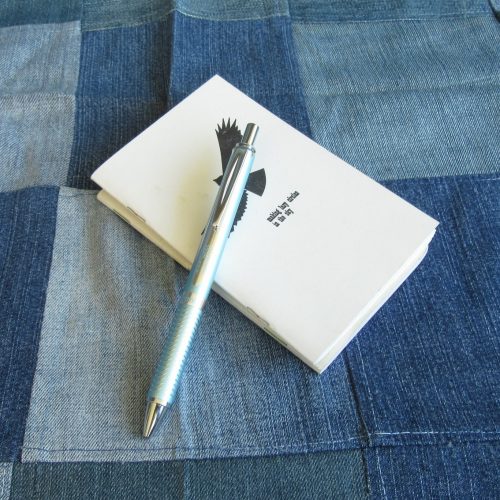I pick up index cards for no real reason, other than I like to use them as convenient scrap paper. I used to have dreams of making a Hipster PDA and becoming super organized and efficient.I much prefer bound pocket notebooks. That said I always have my vintage index card holder on my desk, a few 3×5 cards wrapped in a Gigante card in my Sinclair. I keep them ready for action. INdex cards get used for making notes while on the phone, ideas get jotted down, reminders to myself are scribbled, and plot points are recorded. My point being, I use index cards as throw away scrap paper. I have never expected fountain pen compatibility, though I always test FP on any new cards I buy, you know, just in case.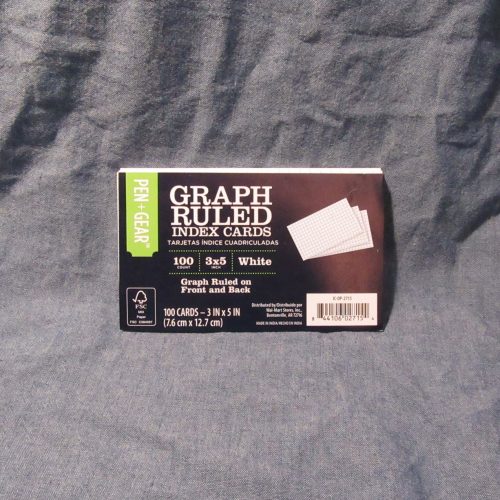
On a whim I purchased a pack of 100 Pen+Gear graph ruled index cards for 48 cents. The cards are bright white with a sharp bright blue ruling. The ruling is 5×5 squares per inch. On many of my cards the ruling is off around the edges- it’s straight but larger in size. This doesn’t bother me, but I KNOW that this will bug the shit out of some of you. Just take a close look at your package.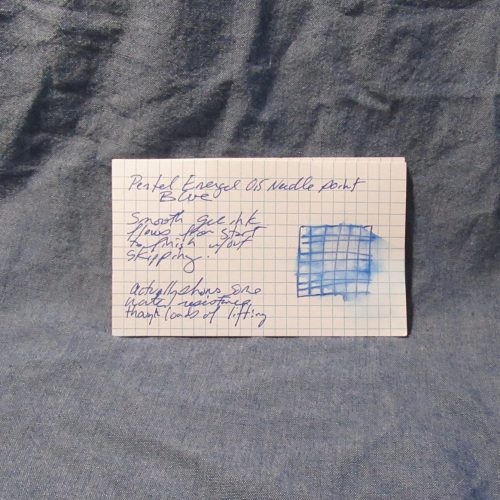
I tested all my currently inked fountain pens, gel ink, liquid ink, pencils, and other writing tools I had on hand, and found that my package performed really really well. I had no feathering, bleed through, or other issues. Both sides of each card were totally usable. My pens stayed true to their nib size and ink looked fantastic on this bright white paper. At least one person in the RSVP FB group reported that they had issues with their fountain pens on the paper- feathering and bleed through. Most people in that thread reported no issues with their pens and results similar to mine. 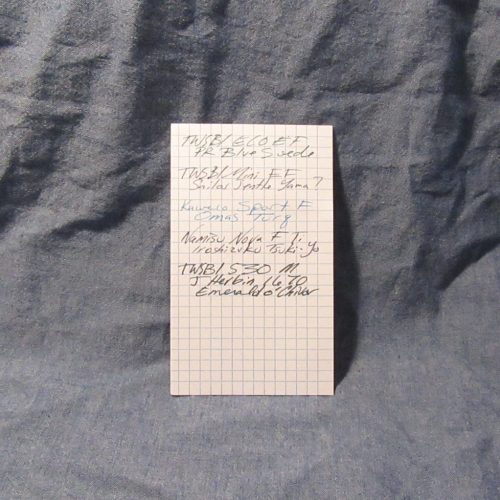
So this brings me to an observation in my experience with buying P+G stuff from Wally World- consistency is an issue. Part of this has to do with how products are sourced by the company- they slap their private label onto the finest cheapest version of that Item that they can find. This year’s Index Cards happen to be really nice for fountain pens, next years? Well we don’t know where they will source those or how they will respond. Last years weren’t very good. As of this writing I cannot determine a good way to tell which package is going to be good. This particular package was Made in India. My suggestion to most people wanting to secure a good index card on the cheap is to stock up on these. Like their pencils you never know when they will change production to a new location and to an inferior product.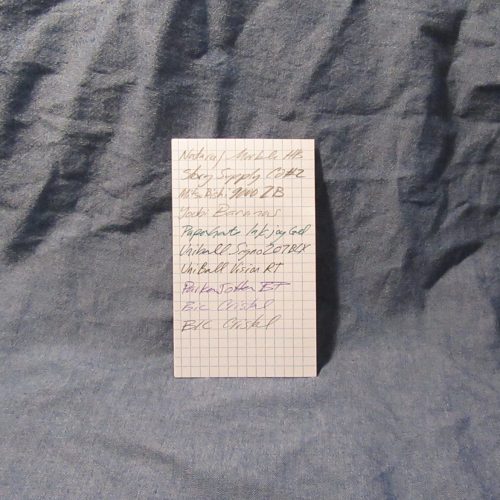
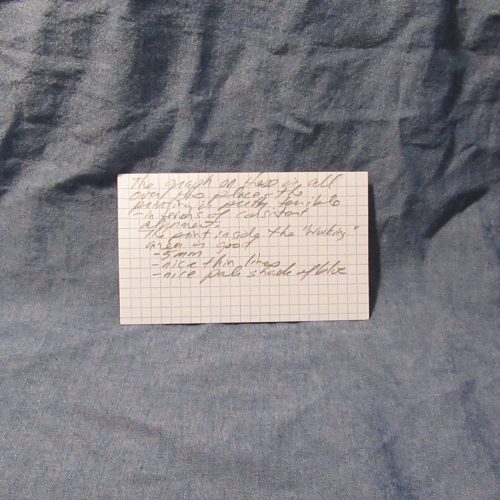
Maybe the graph ruled P+G index cards are my key to finally adopting the hipster PDA. Maybe not, but I’m probably going to head to Wally World and pick up a lifetime supply.